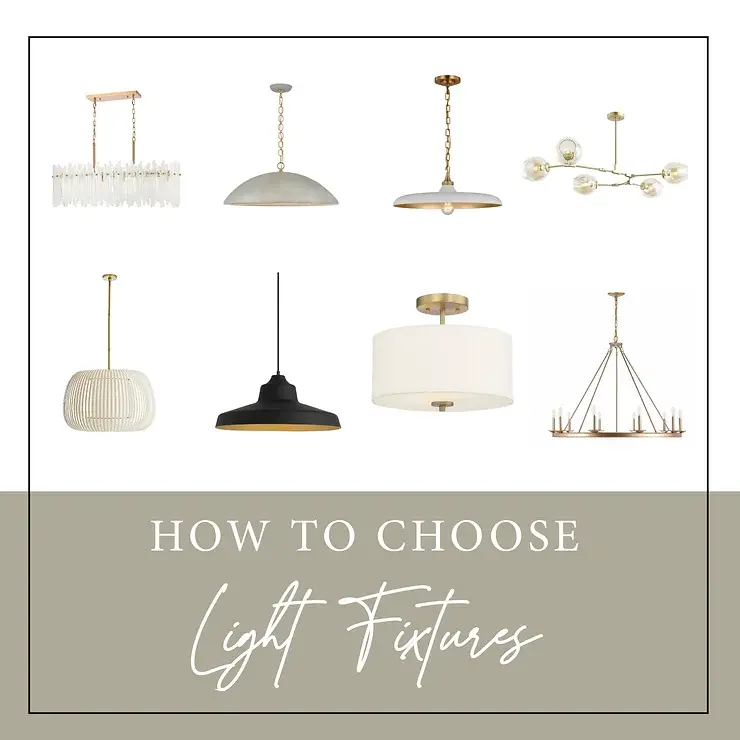How to Choose Light Fixtures
- Alex Sallenger
- Nov 20, 2024
- 3 min read
Are you facing a home project and wondering how to choose light fixtures? Lighting plays a crucial role in defining the mood and functionality of a room, yet it’s often overlooked due to its utilitarian nature. While light fixtures certainly serve a practical purpose, they’re also an essential design element. They're the finishing touch that enhances everything else. Whether you’re redesigning a living room or planning a full home remodel, your interior design project can greatly benefit from carefully considered lighting choices. Properly designed lighting can truly elevate your space and transform any room into a functional and stylish environment.

The first step to a successful lighting design is to start early. Planning your lighting should be one of the first things you do when designing a room or home. Knowing the types of fixtures you want and where they’ll be located will allow you to work closely with your electrician to ensure seamless installation. As an interior designer, I recommend having a comprehensive fixture list for each room. This helps ensure all your lighting elements coordinate well, creating a cohesive look that works together when shopping for your lights.
Next, it’s important to create a layered lighting plan. Lighting should serve three main functions: general, task, and accent.
-General lighting illuminates the entire space. In larger rooms, this may include
chandeliers, recessed lighting, or flush-mounted fixtures. In smaller rooms, you may
find that general lighting isn't necessary.
-Task lighting is designed for specific activities, so think about how you’ll use each
room. If you enjoy reading in your living room or need focused light for writing at your
desk, consider adding lamps or other task lights to those areas. For kitchens, under-
cabinet lighting is an excellent choice for better visibility while prepping meals.
-Once the functional lighting is sorted, you can enhance the space with accent lighting,
which adds drama and draws attention to focal points. Common examples include
sconces by the fireplace or art lighting that highlights your favorite pieces.
The next consideration is the finish of your fixtures. Once you’ve selected the types of lights you need, you’ll want to think about the materials and finishes. While metal finishes, such as brass, bronze, or chrome, are popular, they come in different sheens, such as polished, brushed, or lacquered. Keep in mind that light fixtures aren’t always metal—they can be crafted from natural materials like stone or wood or even come in vibrant colors through paint or enamel. Regardless of the materials you choose, it’s crucial to plan your entire space or home at once to ensure the finishes complement each other and create a unified look. As an interior designer, I focus on making sure your light fixtures enhance the overall design and elevate your home's style.
The final consideration is the bulbs you’ll use. The warmth or coolness of light can greatly impact the ambiance of a room. In most residential settings, warmer light is preferred, as it creates a cozy and flattering atmosphere. Bulb temperature is measured in Kelvin, with bulbs in the 2700K to 3000K range providing a warm light that’s perfect for home settings. Bulbs with a rating of 3500K to 4500K offer a balance between warm and cool, while bulbs over 5000K provide a cooler light best suited for commercial spaces.
Shopping for light fixtures with a fully developed lighting plan in mind makes the process far more efficient and enjoyable. If you’re working on new home or remodel in the Gig Harbor area or need expert guidance selecting the right lighting for your home, don’t hesitate to reach out.
As a dedicated interior designer in Gig Harbor, WA, I can assist you in selecting the perfect lighting fixtures to complement your space. I’ve included an example below of a lighting plan I recently put together, along with links to purchase some of my favorite fixtures. Feel free to shop my selection and let me know if you need any assistance!




Comments